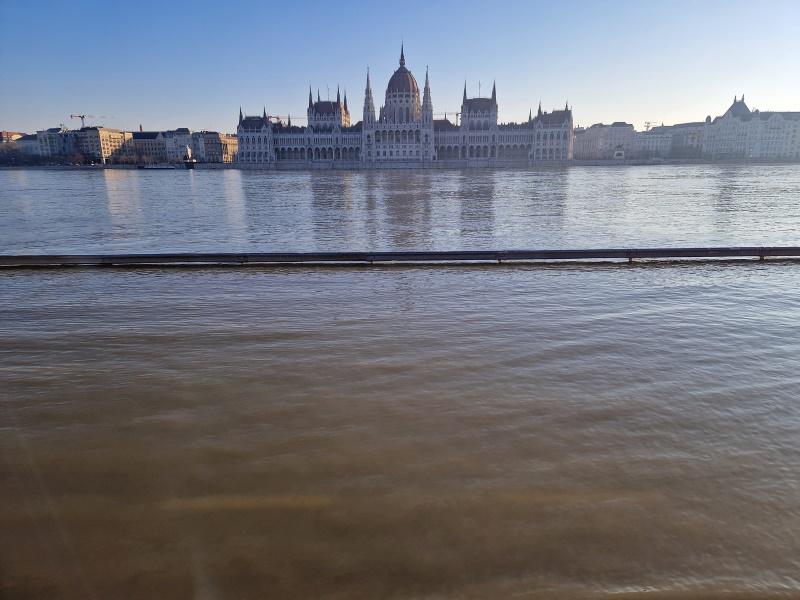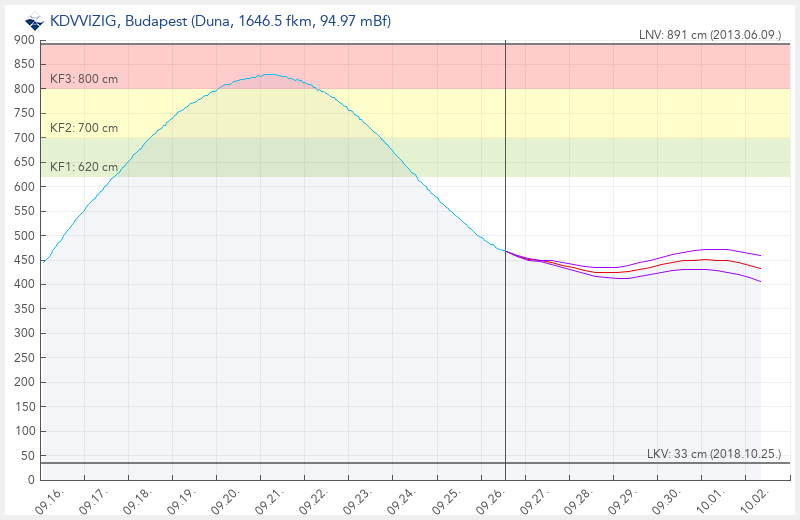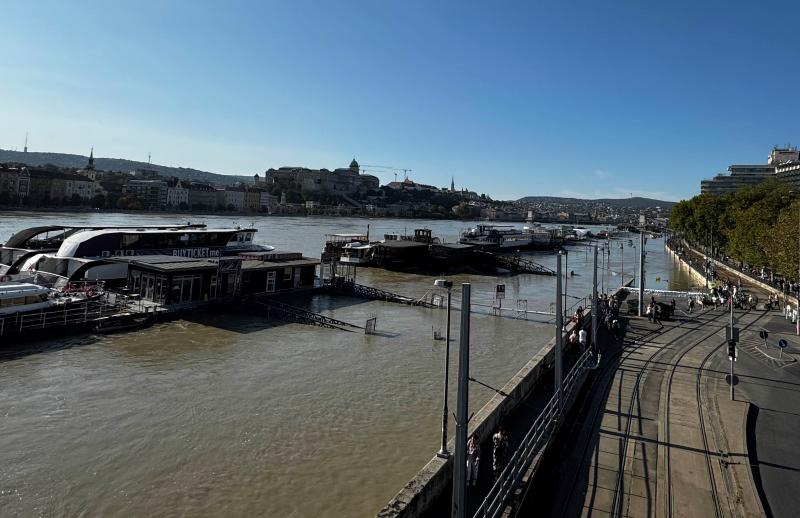
What happened?
This September, Budapest, like many other European countries experienced severe flooding caused by the Danube overflowing its banks. From September 16th to the 24th, heavy rainfall across Europe – namely the Boris hurricane – caused the Danube to rise to dangerous levels, threatening parts of the city. By September 19th, the river had submerged the lower embankments, and water levels were expected to peak at 8.5 meters. The city’s flood defenses were prepared for levels up to 9 meters, ensuring significant protection for residents and infrastructure.
As a result of the flood, several sections of Budapest were disrupted. Key transport services, including tram lines 2, 19, and 41, were either suspended or rerouted, and bus services were interrupted. The Batthyány tér metro station also faced closure. Authorities advised the public to avoid flood-prone areas, especially near the river, due to the strength of the current. Margaret Island was closed to the public, and no trams were operating between some major squares.
Budapest’s proactive measures and preparations ensured minimal damage. Flood defenses were fortified to withstand further rises, and the public was kept informed through social media and official channels. Fortunately, by the end of the week, the water level was expected to recede, reducing the threat.
The 2024 flood in Budapest underscores the city’s vulnerability to extreme weather but also highlights its preparedness and ability to manage such crises effectively.
*Photo: Silverline Cruises

Source: vizugy.hu
Flooding along the Danube is not a new phenomenon. Records of significant floods date back to the early 19th century, with notable floods in 1838 and 1876. The Great Flood of 1838 is particularly infamous, as it devastated Budapest, then known as Pest-Buda, submerging large parts of the city and causing extensive damage. This flood prompted significant changes in urban planning and the construction of flood defenses.
In the 21st century, floods continued to pose challenges. The 1954 flood was another landmark event, leading to the reinforcement of flood defenses and the establishment of more robust flood management systems.
2002 Flood: One of the worst floods in recent memory, the 2002 flood saw the Danube’s water levels rise to unprecedented heights, causing severe damage in Budapest and other parts of Hungary. The floodwaters inundated homes, disrupted transportation, and led to significant economic losses.
2013 Flood: The 2013 flood broke previous records, with water levels in Budapest reaching a historic high. Emergency services were on high alert, and extensive efforts were made to protect critical infrastructure and residential areas. This flood tested the resilience of Hungary’s flood defences and emergency response mechanisms.
Factors leading to flooding along the Danube:
Heavy Rainfalls: Prolonged and intense rainfall in the Danube basin often leads to significant rises in water levels. The river’s extensive catchment area, spanning multiple countries, means that rainfall upstream can have a substantial impact downstream in Hungary.
Snowmelt: In spring, melting snow from the Alps and Carpathian Mountains contributes to increased water volumes in the Danube, often coinciding with heavy rainfall.
Climate Change: Changing weather patterns, including more frequent and intense storms, have increased the likelihood of flooding. Climate change also affects the timing and volume of snowmelt, adding to the complexity of flood management.
Human Activities: Urbanization, deforestation, and changes in land use can exacerbate flooding. Paved surfaces reduce the land’s natural ability to absorb rainfall, leading to higher runoff into the river.
Silverlining…

*Photo: Silverline Cruises
As the flood alert is no more, due to high water level, still the Margaret – and a few more islands along this branch are not accessible and require further restoration.
On the 26th of September the lower quays have been opened and most of the clean-up works are done. Due to this life is slowly coming back to the docks of Budapest. The boat companies are getting ready to get back in business. We would like to inform you that Silverline Cruises also started the scheduled boat rides. Be sure to visit us and sail safe with us on the still high water of the Danube.
Featured Products
![]()
![]()
![]()

 Skip the Line – Parliament Panorama Cruise
Skip the Line – Parliament Panorama Cruise Drink & Piano Show
Drink & Piano Show Halloween Cruise
Halloween Cruise Unlimited Booze Cruise Downtown Budapest
Unlimited Booze Cruise Downtown Budapest Budapest New Year’s Eve Midnight Booze Cruise
Budapest New Year’s Eve Midnight Booze Cruise









